probe
Latest

It's the beginning of the end for NASA's Cassini spacecraft
Cassini is officially, irrevocably in its final year of existence. The NASA spacecraft has been capturing lovely images and collecting samples of Saturn and its orbiting objects since 2004, but today Cassini enters the final phase of its mission. Between November 30th and April 22nd, Cassini will circle Saturn's poles, diving between its outermost rings once every seven days, a total of 20 times (as shown above). Its final mission is also a first -- Cassini will observe unexplored areas of Saturn's rings, including the collection of small moons orbiting near their outer edges.

Mars probe crashed because it misjudged where the ground was
The European Space Agency believes that it knows what caused its Schiaparelli lander to crash on the surface of Mars. It turns out that the spacecraft was hurtling towards the ground perfectly well until it, uh, forgot where the ground actually was. A sensor tasked with determining its altitude failed for a single second, but that was long enough to wreck the entire mission. Since the vessel believed that it had already arrived, it ran through the rest of the landing process and activated the on-ground sensors.

Juno probe makes the closest-ever encounter with Jupiter
If you thought the Juno probe's first photos of Jupiter were tantalizing, you're in for a treat. The spacecraft just completed the closest approach it will take during its primary mission around the gas giant, passing a mere 2,600 miles above the surface early on the 26th. It's the closest any vehicle has been to Jupiter, and NASA researchers already believe that they'll discover new things about the Jovian world once they process the data (which could take "some time," NASA warns). And of course, it's a prime photographic opportunity. You'll not only get the sharpest-ever photos of Jupiter's atmosphere when photos arrive late next week, but the first good look at the planet's poles.
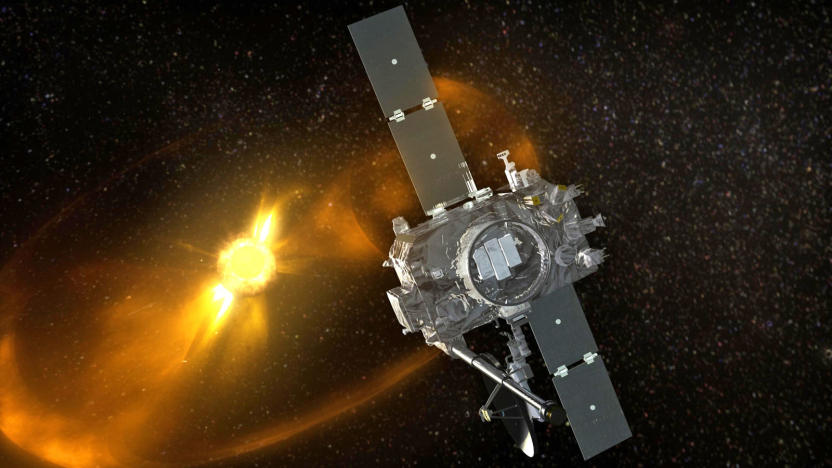
NASA regains contact with spacecraft after a 2-year silence
When mission crews lose contact with a spacecraft or lander for a significant amount of time, that's usually a bad sign... ask the European Space Agency if you want to know why. However, NASA just showed why you shouldn't always give up hope. It reestablished contact with STEREO-B, one of two probes studying the Sun and solar weather, after nearly two years of communications silence. The team had lost its connection during a test of the ship's command lost timer on October 1st, 2014, but kept trying numerous recovery strategies (most recently using the Deep Space Network) until they heard back early on August 21st.
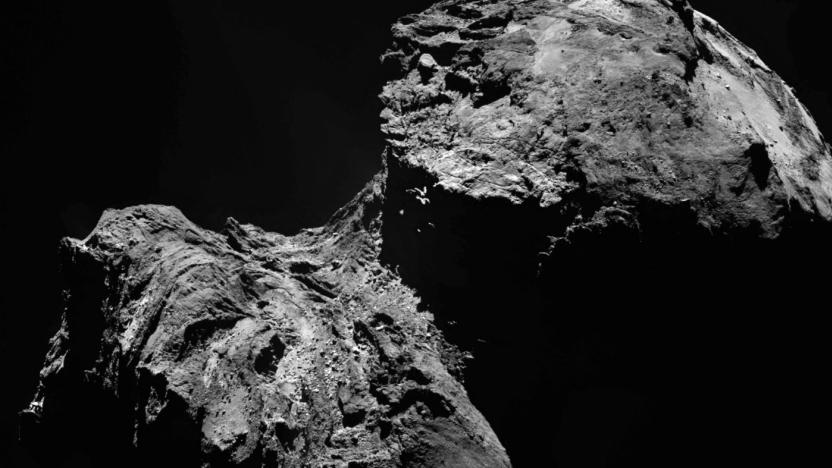
Rosetta will crash into its comet and die on September 30th
Farewell, young spacecraft. The European Space Agency's Rosetta probe has been surveying Comet 67P (or Churyumov-Gerasimenko) for the past 12 years, and on September 30th it will crash into the space rock and end its mission. Rosetta is nearing the orbit of Jupiter, which means it's running short on solar power and bandwidth required to downlink necessary data.
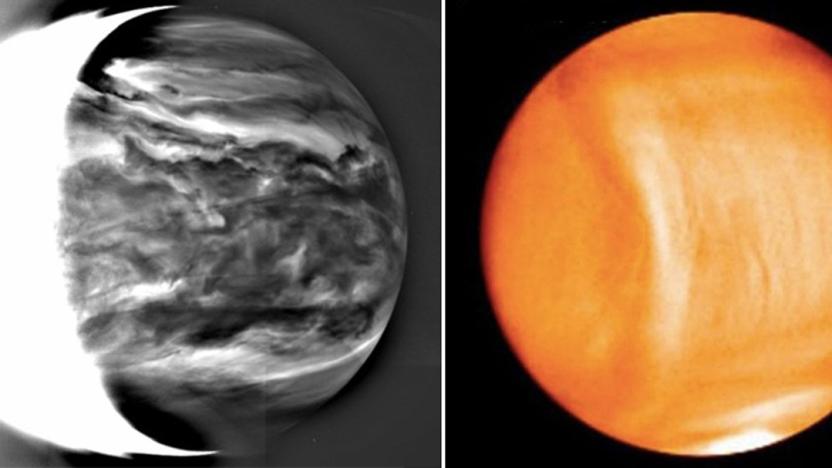
Venus probe's first detailed results reveal strange clouds
Japan's Akatsuki spacecraft almost didn't make it into orbit around Venus, but it's clear that the effort to put it back on track is paying off. The Japan Aerospace Exploration Agency recently obtained the first detailed scientific results from its once-wayward probe, and it's clear that we still have a lot to learn about our closest planetary cousin. For one thing, its clouds don't entirely behave the way researches expect. Infrared images of its dense, multi-layer cloud layers suggest that cloud formation is more complex than once thought, and the unusual bow-shaped cloud formation (shown at right) appears to rotate in sync with the surface, not the atmosphere. It's possible that features on the ground are having a strong effect on the sky.

'Starshot' plan gets probes to Alpha Centauri in your lifetime
The concept of exploring other star systems with probes (and not just telescopes) has proven elusive for one good reason: even the fastest spacecraft would take 30,000 years just to reach Alpha Centauri, our closest neighboring star. However, investor and space project enthusiast Yuri Milner thinks it's possible to do better. He and physicist Stephen Hawking have launched Breakthrough Starshot, a $100 million program that aims to get probes to Alpha Centauri within a generation. If all goes well, the observers would reach the relatively close-by system (4.4 light years away) within 20 years of leaving Earth.
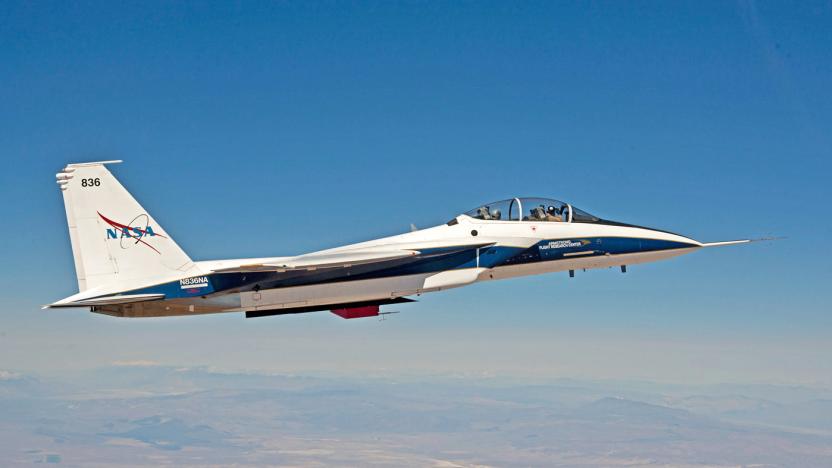
NASA probe should lead to quieter supersonic aircraft
There's a good reason why it still takes hours to fly cross-country: supersonic airplanes are still so noisy that it's utterly impractical to fly them over populated areas. That's why the Concorde was largely relegated to overseas flights, after all. However, NASA has a new sensor that could usher in an era of quieter supersonic aircraft. The Eagle Aero Probe (the device you see in the red housing above) measures air pressure changes right near where they occur during a sonic boom, giving a near-instantaneous sense of what's happening. Previously, the sensors were about 15 feet away in the radar dome -- not exactly helpful when you need real-time data to measure a shockwave.
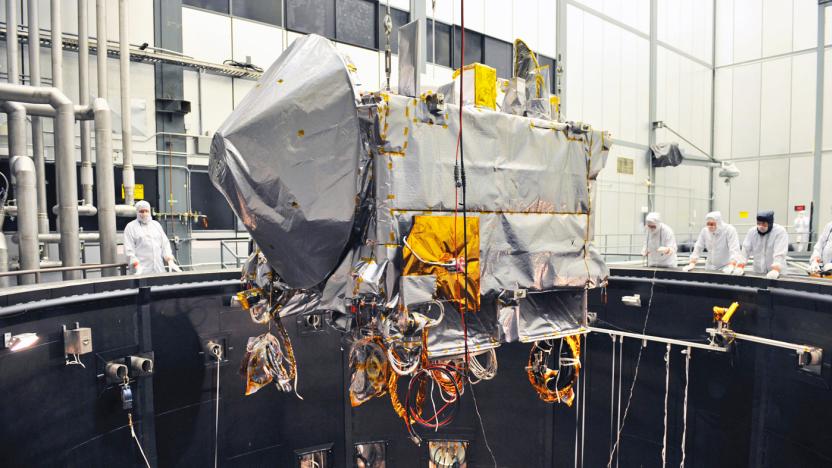
NASA's asteroid explorer faces tests that simulate space
Before NASA's OSIRIS-REx spacecraft can visit an asteroid to collect samples, it'll have to run a tough gauntlet. The probe is undergoing a 22-day thermal vacuum test that will see whether or not it can function in the unforgiving conditions of space. On top of working in an atmosphere-free environment, it'll face temperatures as cold as -274F and the periodic heat of a simulated Sun. So long as OSIRIS-REx makes the grade, it'll largely be ready for its September launch and the epic 7-year journey toward the asteroid Bennu.

China plans to visit the dark side of the moon in 2018
The dark side of the moon hasn't been extensively explored by humans yet (hence the name), and China aims to do so in 2018. The country's State Administration of Science, Technology and Industry for National Defense (SASTIND) announced plans Thursday that include landing the first probe in the area. That spacecraft, the Chang'e-4, is similar to the Chang'e-3 that delivered the Jade Rabbit rover to the moon in 2013, but carries a larger payload. In early 2014, the rover was no longer able to move despite its instruments still functioning.

Juno sets distance record for solar-powered spacecraft
Aided by its enormous solar array, NASA spacecraft Juno has set a record as the most distant solar-powered space explorer. The four ton "armored tank" craft hit 493 million miles yesterday on its way to Jupiter, passing Rosetta's 492-million-mile mark. With a 30-foot-long array and 18,698 solar cells, it's able to profit from what little sunlight hits it. "Jupiter is five times farther from the sun than Earth, and the sunlight that reaches that far out packs 25 times less punch," said Juno project manager Rick Nybakken.

Philae comet lander has likely gone silent for good
If you were hoping for a happy ending to the Philae comet lander's frequently perilous adventures, you might be disappointed. The German Aerospace Center reports that a last-ditch attempt at contacting the lander has so far gone without a response. Either it doesn't have enough power to follow through, or it didn't get the commands in the first place. There will still be "contact opportunities" until January 21st (when the Rosetta spacecraft flies to the comet's southern hemisphere), the Center says, but it's not expecting to hear back.

Cassini leaves Saturn's moon Enceladus after one last mission
The Cassini vehicle has been visiting Saturn's moon Enceladus for a full decade now, but it's finally time for the two to bid adieu. The spacecraft will fly by Enceladus for the last time at 12:49PM on Saturday, skimming a "moderately close" 3,106 miles above the surface. It won't just be reminiscing on its way out, though: its last major Enceladus mission will see it mapping the icy moon's internal heat, taking advantage of Saturn's years-long winter to conduct studies in ideal conditions.

Japan's Venus probe is about to take another shot
Japan tried and failed to get its Akatsuki ("Dawn") probe into Venus' orbit back in 2010, and the spacecraft has been stuck orbiting the Sun ever since. However, the team is about to get another chance at completing its intended mission. Controllers plan to fire the ship's engines on December 7th at 9AM Japan time (December 6th 7PM ET), hopefully giving it just enough of a push to (eventually) get it circling around Venus. They'll know whether or not the burn worked properly within a few hours, but it'll take a few days before they know if they're in orbit.Update: The attempt is happening in just a few minutes, for live updates you can watch a stream of the data and control center, or follow Emily Lakdwalla on Twitter.

New Horizons parts Pluto with a shot of its puniest moon
NASA's New Horizon's spacecraft has done yeoman's work at Pluto, having taken stunning images of the ex-planet and its major moon Charon. Now it's taking off for the largely unseen Kuiper belt, but it grabbed one last image of the tiny moon Kerberos before leaving. It turns out that the body is smaller than thought at around 8 miles across, and consists of two distinctive "lobes." Much like Comet 67P orbited by the ESA's Rosetta spacecraft, the unusual shape of Kerberos may be the result of a collision between two smaller objects. Like Pluto's other small moons, and several spots on the quasi-planet itself, it's also coated with "relatively clean water ice," making it highly reflective.

Europe's investigating Qualcomm's mobile chip dominance
While Qualcomm enjoys a healthy hold over the mobile chip industry, regulators are wondering whether the US company has achieved its dominance in a fair manner. The company has already paid $975 million to escape an investigation into its monopolistic practises in China, but now the European Commission (EC) is on its case, today announcing it has opened two antitrust probes into the company.

NASA prepares its Jupiter probe for arrival
It's been a long time in coming, but NASA's Juno probe is finally close to reaching Jupiter. NASA reports that the spacecraft is "on track" to arrive on July 4th, 2016 (how American!), and that the ground crew is tweaking the flight plan to at once give Juno more time and complete tasks ahead of schedule. The ship's initial orbit is splitting into two in order to test instruments before the science gathering starts. Also, it'll take 14 days to complete an orbit rather than the originally planned 11. That will extend the mission from 15 months to 20, but it should both get basic mapping data sooner (8 orbits instead of 15) and offer more leeway in case the Jovian world's magnetism and radiation create havoc. Hopefully, all this extra work will ensure that scientists understand not just the beginnings of Jupiter and the Solar System, but also the behavior of gas giants around alien stars. [Image credit: NASA/JPL-Caltech]

NASA's Pluto probe will spend 'days' recovering from a glitch (updated)
Don't expect to hear more from NASA's New Horizons spacecraft for a while. The Pluto observer recently encountered a glitch that made it lose contact for an hour and a half. That doesn't sound like much of a problem, but it was enough to kick the probe into a safe mode that doesn't collect scientific data. The mission team believes it could take up to "several days" to get back to normal due to the distance from Earth -- and that's slightly worrying when the mission's all-important Pluto flyby should take place on July 14th. While there's a good chance that New Horizons will be back to normal by the time it's close to the dwarf planet, it's clear that every day of downtime will matter. Update: NASA expects business as usual to resume on July 7th. The problem was an obscure "timing flaw" in the flyby command sequence, and there are no plans to repeat that sequence again. Also, the downtime will have a "minimal" impact on New Horizon's secondary scientific goals.

Rosetta comet probe will continue its mission until September 2016
The Rosetta comet probe just got a new lease on life... if not a terribly long one. The European Space Agency has extended the space explorer's mission from its original December end to September 2016. That's only nine months, but it'll give scientists a shot at studying Comet 67P/Churyumov-Gerasimenko close-up as it flies away from the Sun for some of that period. There's even a chance that Rosetta will get visual confirmation of where the Philae lander touched down, which hasn't been practical with the probe's relatively distant orbit.

NASA's Messenger probe will crash into Mercury at 3:30pm ET today (update: it's done)
It's been a long and hard road for NASA's Messenger Probe as it studied the surface of Mercury for the last four years. That journey, however, will come to an end today, after NASA announced that the craft will crash land into the planet at around 3:30pm ET today. The vehicle was the first that managed to make it to Mercury, and has been in service for more than a decade -- far longer than administrators had ever expected it to last. In fact, the project was only meant to last for a year, but canny fuel-saving measures managed to quadruple its lifespan.





